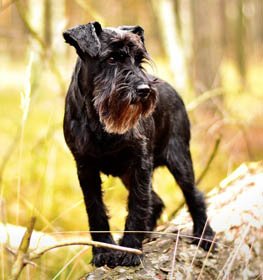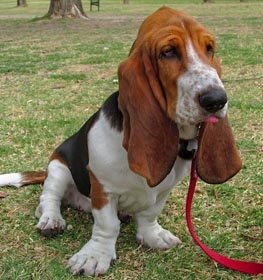Chippiparai Information & Dog Breed Facts
Collection of all the general dog breed info about Chippiparai so you can get to know the breed more.
| Group | Hunting Dogs |
|---|---|
| Popularity Rank | 358 |
| Reviews | 3 |
| User Ratings | |
|
Compare the Chippiparai With Other Dogs
Select at least one dog breed to make the comparsion. | |
 | |
| Origin | |
|
Common Names & Aliases
What other names is a Chippiparai known by? Discover all traditional, regional and informal names used for this breed. | Kanni |
|---|---|
|
Breed Classification
What type of dog breed is a Chippiparai? Learn about its genetic classification and breeding category. | Purebred |
|
Size Classification
What size category is a Chippiparai? Learn how big the Chippiparai breed typically grows. | Medium |
|---|---|
|
Weight Statistics
How much does a Chippiparai weigh? Discover typical weight ranges for adult males and females of the Chippiparai breed. | 33-44 pounds (15-20 kg) |
|
Average Weight
What is the average weight of a Chippiparai? | 38.5 pounds (17.5 kg) |
|
Height
How tall is the Chippiparai? Chippiparai height: | ~25 inches (~63.5 cm) |
|
Average Height
What is the average height of a Chippiparai? | ~25 inches (~63.5 cm) |
|
Price Range
How much does a Chippiparai puppy cost? Find current market prices and factors affecting Chippiparai costs. | $80-$120 If you choose to purchase the Chippiparai, you should know that the mentioned amount of money is an average of the collected data from breeders’ sites and puppy finder places. If you have a Chippiparai for sale, please advertise it on a reliable website to make sure the Chippiparai gets to a happy place. |
|---|---|
|
Availability
How easy is it to get a Chippiparai? How many Chippiparai are there in the world? | Average: The Chippiparai is a commonly available dog breed. There is less risk of overbreeding compared to the very popular dogs. Of course, they may be more popular in some countries, and inbreeding may occur, so be careful. |
|
Intelligence Rating
How intelligent is a Chippiparai? Discover the Chippiparai's intelligence ranking and learning capabilities. | Smart: The Chippiparai dogs have great intelligence. They understand and memorize new commands in 15-25 repetitions.
The Chippiparai is among the smartest dogs in the intelligence ranking. |
|---|---|
|
Training Difficulty
How easy is it to train a Chippiparai? Learn about the Chippiparai's trainability and response to training methods. | Chippiparai dogs are easy to train. They find out the association between commands and actions quite quickly. |
|
Watchdog Rating
How good is a Chippiparai as a watchdog? Learn about the Chippiparai's alertness and guarding instincts. | Chippiparai dogs are good watchdogs. Their main job is to observe and they're consistent in their effort. Good vocal cords and a sense of hearing belong to them. Usually, they're territorial and protective about their property, so the Chippiparai dogs will alert you if they sense something different.
|
|
Territorial Protection
Is a Chippiparai protective of its territory? Learn about the Chippiparai's guarding instincts and behavior. | Chippiparai dogs strongly protect their territory. This breed is a complete security guard, so you don't have to be afraid in case of danger. |
|
Personality Traits
What personality does a Chippiparai have? Learn about characteristic Chippiparai temperament and behavior traits. | IndependentLoyalRobust |
|---|---|
|
Sensitivity Level
How sensitive are they? Chippiparai sensitivity: | Chippiparai dogs have an average emotional level and are not the most sensitive dog breed. Sometimes it's okay to change the daily routine, have guests and listen to loud music.
Some dogs handle moderate punishment very well, while others crumble apart at a dirty look. This breed is not affected emotionally by moderate punishment. |
|
Affection Level
How affectionate are they? Is a Chippiparai a good family dog? | High: Chippiparai dogs are genuinely loyal, soft and gentle, loving, and affectionate dogs toward their handlers. They enjoy quality time with their owners despite the activity and are considered great therapy dogs for those in need. This breed responds strongly to their handler's emotions because they bond closely. Their happiness is your happiness. |
|
Social Needs
How much social interaction does the Kanni need? Chippiparai social needs: | Chippiparai dogs need for social interaction is average. This breed likes being around people or other animals, but they don't mind being left alone for a few hours either. |
|
Impulse to Wander or Roam
How likely is the Chippiparai to run away? Does this breed explore or wander a lot? Does Chippiparai roam? | Chippiparai dogs have high wanderlust potential, which means that this breed has a strong desire for exploring the world. Safer to walk them on a leash unless you teach them how to get back to you on command. This breed is also able to cause damage to your fence. |
|
Prey Drive
Do this canine have a strong prey drive? Does Chippiparai have high prey drive? | Chippiparai dogs have a high impulse to chase and catch something. Cats or any other small animals are in danger. It's a natural instinct, doesn't necessarily mean that Chippiparai dogs are aggressive. Better to keep this breed on a leash. |
|
Barking Frequency
Does a Chippiparai bark a lot? Learn about typical Chippiparai vocalization patterns and triggers. | Low to Average: The Chippiparai rarely barks. This breed could be a good choice if you're looking for a quiet breed. They don't bark unless there is a good reason.
Top reasons for barking: protection, alarm, fear, boredom, attention-seeking, greeting, separation anxiety, compulsive barking. |
|---|---|
|
Playful Nature
How playful is a Chippiparai? Understand the typical play drive and energy level of the Chippiparai breed. | Average: Chippiparais, like any other dog breed, like playing. Sometimes they bark in excitement for playing, but they are not the most playful dog breed. |
|
Apartment Adaptability
Can a Chippiparai live in an apartment? Learn about the Chippiparai's suitability for apartment living. | Apartment-friendly dog the Chippiparai breed. It is best if you have a small garden where it can occasionally go out to do its business, but this is not important at all. You can exercise him enough with a walk or two a day, so he's comfortable in an apartment. |
|
Lifestyle Adaptability
How adaptable is a Chippiparai to lifestyle changes? Learn about the Chippiparai's flexibility to new situations. | Chippiparai dogs adapt very well to lifestyle changes and basically all living environments. They don't mind moving from one place to another with their owner. |
|---|---|
|
Alone Time Tolerance
Can a Chippiparai be left alone? Learn about the Chippiparai's tolerance to solitude. | Just like every puppy, they are prone to panic, cry, bark, whine when they left alone by their owner. With proper socialization and quality time with the dog can solve this problem. |
|
Bite Risk Assessment
What is a Chippiparai biting potential? Learn about the Chippiparai's bite risk factors. | Low 🔽 The Chippiparai has a low chance of biting somebody. Top reasons for dog bite: protection, pain, excitement, herding instinct, being provoked. (Data based on the available online bite statistics.) |
|---|---|
|
Mouthing Tendency
Is a Chippiparai mouthy? Learn about the Chippiparai's tendency to use mouth during play. | Chippiparai dogs have an average tendency to nip, chew, playbite, or herd people. It's a common habit during puppyhood, not aggressive behavior. These "bites" don't hurt, but Chippiparai dogs need to be taught a good attitude. |
|
Bite Strength Rating
How strong is a Chippiparai bite? Learn about the Chippiparai's bite force measured in PSI. | Between 200 and 400 PSI ⏺ Chippiparai bite force: Ordinary. Bite force Chippiparai measurements typically fall within the range of 200 to 400 PSI. The bite force of a Chippiparai is considered ordinary when compared to other dog breeds, but it is still quite powerful. This Chippiparai bite force PSI can cause bite wounds. Chippiparai bite PSI is not something that should be feared if the dog is well-trained and managed. To avoid any issues, it's essential to learn how to train a Chippiparai puppy not to bite from an early age.
The Chippiparai, and many others, have a fearsome presence because they have significant jaw strength, so it is important not to anger the dog and have it around strangers until it is fully trained. However, they are usually quite calm and good companions, they work well in families and are easy to care for. In conclusion, while the Chippiparai bite force is certainly an interesting aspect of the breed, it is important not to let it overshadow the many other reasons why these dogs are so loved and respected. With proper training and socialization, a Chippiparai can be a loyal and protective companion for your family. |
|
Average Lifespan
How long does a Chippiparai live? Learn about the typical lifespan of the Chippiparai breed. | 11-15 years The average lifespan of Chippiparai: 13 years |
|---|---|
|
Climate Tolerance
How well does a Chippiparai handle different weather? Learn about the Chippiparai's climate adaptability. | Prefers warm weather Dogs that prefer warm weather conditions are typically breeds that were originally bred in warmer climates. |
|
Health Concerns
What health issues are common in a Chippiparai? Discover typical conditions affecting the Chippiparai breed. | Chippiparais are commonly healthy dogs. Vet costs aren't expensive with this breed. |
|
Vet Care Frequency
How often does a Chippiparai need vet visits? Learn about the Chippiparai's veterinary care requirements. | Rare The Chippiparai should have a complete physical check-up at least every 12-18 months (but preferably once per year). If your dog shows any symptoms, call your veterinarian. |
|
Health Problems
What genetic/health problems does the Chippiparai breed have? What are the health issues and concerns of the Chippiparai breed? Most common health risks of Chippiparai: | AllergiesCold IntoleranceFood Allergies Hip Dysplasia Progressive retinal atrophy (PRA)Sensitivity To Anesthesia |
|
Energy Rating
How energetic is a Chippiparai? Understand daily activity needs of the Chippiparai breed. | Chippiparai dogs have a higher energy level than other dog breeds. If you want a dog for snuggling on the couch, this breed isn't the perfect choice for you. |
|---|---|
|
Activity Requirement / Exercise Need
How much exercise does a Chippiparai need? How much exercise do Chippiparai dogs require per day?
Do Chippiparai dogs need a lot of exercises? | Chippiparai dogs have an average exercise need. This breed is satisfied with short walks every weekday and a long ones on weekends. |
|
Sleeping Need
How much sleep does the Chippiparai breed need? | Chippiparai dogs sleep 12-14 hours a day as an average dog and they're not considered a lazy breed. |
|
Obesity Tendency
Is a Chippiparai prone to weight gain? Learn about the Chippiparai's obesity risks. | Low to Average: The Chippiparai has a low to the average risk for obesity. To make your dog happy and fit, feed him with quality dry dog food and live an active life together. Try to find the happy medium between exercise and feeding.
If you notice any weight gain, consult your veterinarian and make a diet plan. Reduce unhealthy food and snacks, and measure the Chippiparai weight regularly. |
|---|---|
|
Food Consumption
How much food does a Chippiparai need daily? Learn about the Chippiparai's feeding requirements. | 2.5 to 4 cups of high-quality dry food a day, divided into two meals. |
|
Allergy Friendliness
Is a Chippiparai hypoallergenic? Learn about the Chippiparai's suitability for allergy sufferers. | No Chippiparai dogs don't do well with allergy sufferers by causing allergic reactions. Some dog breeds are even considered to higher possibility of an allergic response. Coat type isn't necessarily relevant, because most people are allergic to dander (flakes on the dog's skin) or saliva, not actually to dog hair. |
|---|---|
|
Coat Colors
What colors does a Chippiparai come in? Discover all possible Chippiparai color variations. | Red White SilverFawn Brindle Grey |
|
Grooming Requirements
How much grooming does a Chippiparai need? Learn about Chippiparai coat maintenance requirements. | Effortless: The Chippiparai requires minimal grooming. Seasonal flea treatment is needed, but cutting the dog's hair by a professional groomer isn't necessary. Ears and eyes should be cleaned sometimes to avoid infections. Chippiparai is one of the best choices if you don't have the time, skill, or money to take care of a high-maintenance dog. Highly recommended for beginners. |
|
Drooling Tendency
Does a Chippiparai drool a lot? Learn about the Chippiparai's drooling habits. | The Chippiparai is an average drooler. Drooling is the unintentional saliva flowing outside of the mouth. It can be completely normal or a sign of a health problem.
If you notice any change in your dog's drooling habit, you should contact a vet as soon as possible. |
|
Stinkiness Rating
Does a Chippiparai smell bad? Learn about the Chippiparai's natural odor levels. | Medium ⏺ The Chippiparai has an average chance of bad smell. Top reasons for dog stinkiness: infection of bad tooth/ear/skin folds, gas attacks. |
|
Coat Characteristics
What type of coat does a Chippiparai have? Learn about the Chippiparai's fur characteristics. | SmoothDouble |
|
Bathing Needs
How often does a Chippiparai need baths? Learn about the Chippiparai's bathing requirements. | 3-4 weeks More often than average. These dog coats tend to be longer, softer, and oilier than short-haired breeds. While a good bath every now and then is a great way to keep your buddy from becoming overly smelly, be mindful about overbathing.
Bathing will wash away your dog’s natural oils, while a simple brushing every few days should keep them clean. |
|
Shedding Level
How much do Chippiparai dogs shed? How to control, reduce and prevent the shedding of the Kanni? Do Chippiparai dogs shed a lot? | Chippiparai dogs shed moderately. It's a natural process of the hair growth cycle. Regular brushing reduces the amount of hair that sheds. It mostly depends on their health status and breed type. |
|
Child Compatibility
Is a Chippiparai good with children? Learn about the Chippiparai's behavior around kids of different ages. | Chippiparai dogs are not kid-friendly dogs. This breed is not recommended for families with children. |
|---|---|
|
Pet Compatibility
How well does a Chippiparai get along with other pets? Discover the Chippiparai's compatibility with other animals. | Chippiparai dogs do best when they’re the only pet at the family. |
|
Stranger Friendly
Are they aggressive or friendly towards/with strangers? Chippiparai temperament with other people: | Chippiparai dogs are not the most stranger-friendly dogs. |
|
Cat Friendly
How well do Chippiparai dogs get along with cats? Are they good with kittens? What is this fido's temperament with cats? Can they be good with cats? Can the Chippiparai breed live with a cat? | Chippiparai dogs are not cat-friendly dogs. |
|
Dog Friendly
Is Chippiparai good with other dogs? Are they dog-friendly dogs? How well do Chippiparai dogs get along with other dogs? | Chippiparai dogs are dog-friendly dogs. If you want more dogs in your family or you'd like to join dog meetups, the Chippiparai can be a great choice. |
|
Good For First Time Owners
Is Chippiparai breed good for first-time owners? Do they make a good dog for novice owners? Is Chippiparai breed suitable for first-time owners? | Yes Chippiparai dogs are good for novice owners, due to their easy-going personality. |
|
Office Friendly
Are Chippiparai dogs good office canines? Do Chippiparai dogs make good office-friendly pets? Can they be office dogs? | No Chippiparai is not the best dog breed for office environment. |
|
Senior Citizens Friendly
Are they senior citizens friendly dogs? How well do Chippiparai dogs get along with the elderly people? What is the Kanni temperament with senior people? Are Chippiparai dogs good for elderly owners? | Chippiparais are not recommended for elderly people. |
|
Service Dog Capability
Can a Chippiparai be a service dog? Learn about the Chippiparai's service work potential. | Not really This breed generally not used as a service dog. A service dog is a term used in the USA to refer to any type of assistance dog specifically trained to help people who have disabilities, such as visual impairment, hearing impairments, mental disorders, seizures, mobility impairment, and diabetes. Service dogs are protected under the ADA (Americans with Disabilities Act).
Chippiparai is not the best breed for service purposes. |
|---|---|
|
Therapy Work Suitability
Is a Chippiparai good as a therapy dog? Learn about the Chippiparai's therapy work aptitude. | Not really This breed is generally not used as a therapy dog. A therapy dog is a dog that might be trained to provide affection, comfort, and love to people in hospitals, retirement homes, nursing homes, schools, hospices, disaster areas, and people with anxiety disorders or autism.
Chippiparai is not the best breed for therapeutic purposes. |
|
Scent Detection Ability
Is a Chippiparai good at detection work? Learn about the Chippiparai's scenting abilities. | Not really They are not typically employed for this type of work, but there may be exceptional cases. A detection dog or sniffer dog is a dog that is trained to use its senses (mostly its smell) to detect substances such as explosives, illegal drugs, wildlife scat, currency, blood, and contraband electronics such as illicit mobile phones.
Chippiparai is not the best breed for detection purposes. |
|
Search & Rescue Potential
Can a Chippiparai do search and rescue? Learn about the Chippiparai's SAR capabilities. | Not really This dog breed is not typically used as a search and rescue dog. The use of dogs in search and rescue (SAR) is a valuable component in wilderness tracking, natural disasters, mass casualty events, and locating missing people.
The Chippiparai is not the best breed for SAR purposes. |
|
Maritime Work Ability
Is a Chippiparai good on boats? Learn about the Chippiparai's maritime capabilities. | Not really Chippiparai breed usually doesn't like being on a boat. Boat dogs were typically bred for their strength, stamina, and water resistance, as they were often required to perform tasks such as pulling in fishing nets, and jumping into the water to retrieve ropes or lines, or helping to move cargo. Sailor dog is a type of dog that was bred to accompany sailors on their voyages. They were typically used for three purposes: as a working dog, a watchdog, and as a companion. A boat dog is a term used to describe a type of dog that was traditionally bred and used as a working dog on boats. |
|
Draft Work Capability
Can a Chippiparai pull carts? Learn about the Chippiparai's drafting abilities. | Not really A drafting dog or draft dog is a dog bred and used for cart pulling. Dogs bred for this work have strong builds and qualities that are needed, strength and determination.
Chippiparai is not the best breed for drafting purposes. |
|
Military Service Background
Was a Chippiparai used in military service? Learn about the Chippiparai's military history. | Not really In history, this breed was not really used for combat dog. |
|
Puppy Litter Size
How many puppies does a Chippiparai usually have? Learn about typical litter sizes. | 4-7 puppies |
|---|---|
|
Pregnancy Duration
How long is a Chippiparai pregnant? Learn about the Chippiparai's gestation period. | 60-64 days Reproductive cycle of the female Chippiparai: The first period called Proestrus lasts for about 9 days.
During this time the females start to attract males. You can notice by swelling vulva and bloody discharge. The second part is the Estrus when the female is receptive for the male. It lasts for about 3 to 11 days. The sign of the proestrus part is the soft and enlarged vulva. The discharge decreases and lightens in color. The third part is the Diestrus. Normally, it occurs around day 14. In this period the female’s discharge changes for vivid red and coming to its end. The vulva returns to average, and she will no longer permit mating. The fourth part called the Anestrus. The time frame between heat periods normally lasts about six months. |
|
Breeding Frequency
How often can a Chippiparai have puppies? Learn about safe breeding intervals. | Once a year. More frequent breeding is not healthy. It is very important not to buy a dog from a puppy mill, where the needs of the pups and their mothers are ignored. It's an inhumane high-volume dog breeding facility, where puppies born several times a year. |
|
AKC Classification
What AKC group is a Chippiparai in? Learn about the Chippiparai's AKC classification. | Not recognized by the American Kennel Club. |
|---|---|
|
FCI Classification
What FCI group is a Chippiparai in? Learn about the Chippiparai's international classification. | Not recognized by FCI. |
|
Kennel Club Recognition
Which kennel clubs recognize a Chippiparai? Learn about the Chippiparai's official recognition. | Dog Registry of America Inc. |
Chippiparai Pros and Cons
- Intelligence Rating: Smart: The Chippiparai dogs have great intelligence.
- Training Difficulty: Chippiparai dogs are easy to train.
- Health Concerns: Chippiparais are commonly healthy dogs.
- Apartment Adaptability: Apartment-friendly dog the Chippiparai breed.
- Grooming Requirements: Effortless: The Chippiparai requires minimal grooming.
- Obesity Tendency: Low to Average: The Chippiparai has a low to the average risk for obesity.
- Watchdog Rating: Chippiparai dogs are good watchdogs.
- Lifestyle Adaptability: Chippiparai dogs adapt very well to lifestyle changes and basically all living environments.
- Dog Friendly: Chippiparai dogs are dog-friendly dogs.
- Good For First Time Owners: Chippiparai dogs are good for novice owners, due to their easy-going personality.
- Allergy Friendliness: Chippiparai dogs don't do well with allergy sufferers by causing allergic reactions.
- Impulse to Wander or Roam: Chippiparai dogs have high wanderlust potential, which means that this breed has a strong desire for exploring the world.
- Child Compatibility: Chippiparai dogs are not kid-friendly dogs.
- Cat Friendly: Chippiparai dogs are not cat-friendly dogs.
- Office Friendly: Chippiparai is not the best dog breed for office environment.
- Senior Citizens Friendly: Chippiparais are not recommended for elderly people.
Chippiparai History
The Chippiparai is a sighthound breed that originates in Southern India. The breed is most widespread in Tamil Nadu, where it is thought to have originated, but it is also seen in smaller numbers in Kerala, which is a nearby state. However, until the last 50 years or so, dog breeders in India focused solely on working ability, especially in the case of working dogs. If pedigree and pureblood were considered at all, it was a minor consideration. Moreover, they haven’t kept any records or written documents about dogs which makes it extremely difficult for experts and historians to look into the origins of native breeds such as the Chippiparai. Although, it is safe to say that the breed is most likely linked to India’s other native sighthound breeds, such as the Rampur Greyhound, Kanni, Mudhol Hound, Combai, and Rajapalayam, the exact relationship between them is unknown. The age of the Chippiparai is one of the major mysteries surrounding the breed. The Chippiparai is almost probably an ancient breed, but it could have evolved anywhere from hundreds to thousands of years ago.
Furthermore, there are many theories concerning the origins of the breed. The most popular one claimed by many is that the Chippiparai is most similar to the Saluki and probably a descendant of that breed. The Saluki is said to be the world’s oldest purebred dog, with archaeological evidence indicating that it was created by the Ancient Egyptians and Ancient Mesopotamians up to 7000 years ago. The Saluki has long been thought to be the ancestor of all sighthounds, spreading across the ancient globe through commerce and conquering. However, in recent years, genetic tests have shown that sighthounds are probably not all directly descended from the Saluki but were instead developed independently several times throughout history in different places. According to experts, the Chippiparai and other Indian sighthounds are far more similar to Central Asian sighthounds than the Saluki, and the Indian breeds are much more likely to be descended from Central Asian canines due to the long history of contact. However, there is also a possibility that the Chippiparai and other native Indian breeds were developed entirely from local dogs. The ruling elites of the Indus Valley Civilization developed their own hunting dogs, which may very well have been sighthounds, and possibly the ancestors of all Indian sighthound breeds.
Moreover, whenever and however the Chippiparai was developed, it is sure that it became highly valued in Southern India. The caste system, which is a major aspect of Hindu religion, firmly separated and stratified Indian society until late in the colonial period. The Chippiparai was almost exclusively retained by the governing and rich castes, as they were the only Indian citizens who could afford to keep a dog and hunt with them legally. The royal families of Madurai, Thanjavur, and Tirunelveli were particularly fond of the Chippiparai. The breed was used as a coursing dog. When ground-dwelling prey was seen, this incredibly fast breed was unleashed to hunt it down. When the Chippiparai caught its prey, it either killed it or held it until its master arrived to finish the job. Chippiparais were used to hunt deer, gazelle, hare, rabbit, squirrel, bustards, and pheasants, as well as other species present in Tamil Nadu that are comparable in size or smaller than the breed. However, because the Chippiparai was so driven to chase prey, it needed to be contained at all times to prevent it from running off. The breed was kept tied or chained at all times. As cruel as it sounds, it had one positive consequence, which was that it kept the breed pure for generations by preventing them from random breeding, as was the case with most Indian canines.
Life in Southern India is extremely challenging not just for people, but for dogs as well. The tropical heat regularly exceeds 100 degrees Fahrenheit in the shade, which allows hundreds of species of disease and parasites to thrive, many of which are lethal to dogs. The region is also home to a number of dangerous animals, such as cobras, venomous snakes, crocodiles, bears, lions, and so on. However, it is interesting that the Chippiparai became extraordinarily well-adapted to life in its homeland. The breed is one of the most heat tolerant of all breeds, able to work at a high level for hours in conditions that would kill many other breeds in minutes. The Chippiparai also evolved inherent resistance to a variety of diseases and parasites, as well as survival skills when confronted with potentially lethal wildlife and the ability to live on very little food.
Furthermore, the Chippiparai, like most Indian breeds, was largely ignored by European colonial rulers. Despite the fact that sections of Tamil Nadu were occupied by the Portuguese, Dutch, French, and British empires at one time, none of them were interested in the breed. The general opinion was that Indian dogs were inferior to European varieties, with the majority of them being nothing more than strays. Some of these ideas pervaded Indian thought, and the majority of Indian breeds were mostly overlooked. Moreover, as there was no unified Indian Kennel Club on a national level until 1956, Indian breeds also suffered from a lack of formal recognition. The Chippiparai’s numbers have been steadily declining over several years due to a lack of enthusiasm. The breed is now considered extremely rare, with only about 50 municipalities remaining in the traditional strongholds of Madurai, Thanjavur, and Tirunelveli. Almost the entire global Chippiparai population now lives in the Indian state of Tamil Nadu, while a small number of breed members also reside in Kerala, a nearby state.
As the Chippiparai is already very rare and its numbers continue to decline, many experts fear that the breed is in imminent danger of extinction. The Kennel Club of India and the United Indian Kennel Club are the two major Indian dog registries that currently recognize the breed. However, there has been little interest in breed-in dog exhibitions, and it is rarely seen in Indian dog shows. The Kennel Club of India established a center in Chennai in 1982 to promote native breeds. The center has greatly increased interest in several breeds but has had little impact on the Chippiparai.
Latest Chippiparai Compares
Chippiparai Names
How old is my Chippiparai in human years?
You May Also Like
Rate The Chippiparai Breed
Chippiparai Comments, Reviews and Questions
- Nala
Jun 23, 2021, 6:34:21 AM:
My dog is very obedient and very intelligence
- M. Nibun
Jun 11, 2020, 1:37:43 AM:
This dogs will play with child's and make them safe when the are not in home. It's a good dog
- Chippi
Jun 10, 2020, 9:26:19 AM:
Perfect for your home nothing will come to your home




